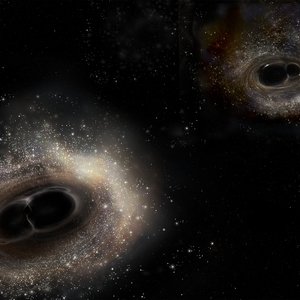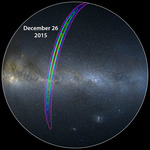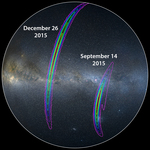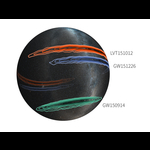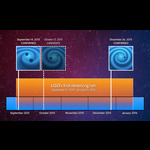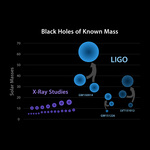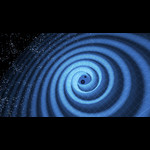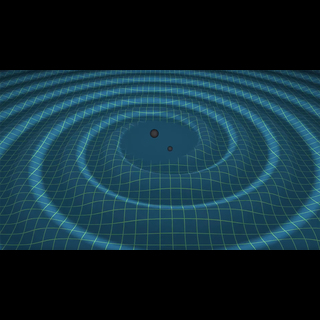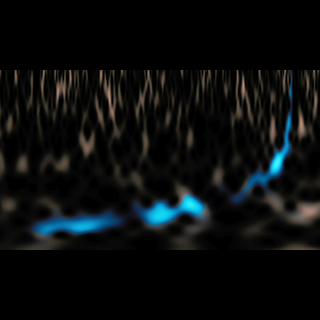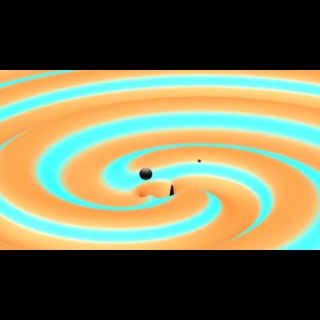Simulation of the binary black-hole coalescence GW151226
Credit: Max Planck Institute for Gravitational Physics/ Simulating eXtreme Spacetime (SXS) project
The video shows a numerical simulation of the gravitational-wave event GW151226 associated with a binary black-hole coalescence. The two black holes have a mass ratio of nearly 3, which lies in the possible predicted mass range for the binary system. Starting at a frequency of 35Hz, we show the last 55 gravitational-wave cycles before merger. Most of the signal-to-noise ratio for the event GW151226 is accumulated during those cycles. The strength of the gravitational wave is indicated by elevation as well as color, with cyan indicating weak fields and orange indicating strong fields. We rescale the amplitude of the gravitational wave during the simulation to show the signal during the entire animation not only close to merger, where it is strongest.
The sizes of the black holes as well as the distance between the two objects is increased by a factor of two to improve visibility. The colors on the black holes represent their local deformation due to their intrinsic rotation (spin) and tides. The movie shows the process in slow motion. The animation would last approximately 1 second from beginning to end in real time. Due to the length of 55 gravitational-wave cycles, we decide to show the simulation with different speeds, i.e., the last 10 cycles are shown 2.5 times slower than the first part. This improves visibility of the merger and ringdown of the remnant black hole.
- Date
- June 15, 2016
- ID
- ligo20160615v3
- Type
- Simulation
- Credit
- Max Planck Institute for Gravitational Physics/ Simulating eXtreme Spacetime (SXS) project

